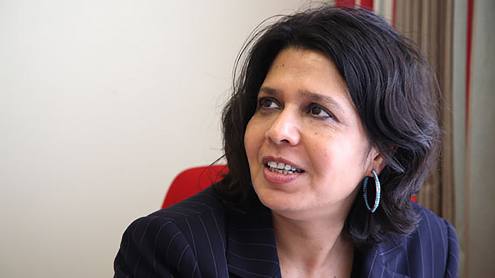I found myself in the middle of a conversation recently about the fact that we do not have real straight-through processing (STP) in most financial firms. One senior manager said that he had started focusing upon STP back in the 1970s and could not believe that, 30 years later, we still do not have it.
Most of the people I talk with, when asked "what levels of STP do you have?" give me wishy-washy answers of "oooh, about 60% to 70%". 'About' is not good enough; the bank should have an exact level of processing straight through.
In fact, we then got into a much longer dialogue concerning enterprise management and monitoring systems, and the fact that most firms struggle with enterprise management. It is down to the very nature of fragmented structures, legacy systems and merged and acquired operations that make the enterprise view hard. Hard, but achievable. So why is it not achieved?
Scared of change
A view put forward was that it does not make sense for some to have this view. It makes you far less accountable if you cannot measure your complete operation than if you can. What?
Apparently, for some, it is better to avoid end-to-end processing and full enterprise dashboards if it means that the CEO cannot hold the chief operating or information officer to account. In other words, total quality management and STP is counterproductive for some, as it is better to fudge it and keep the processing in a separate, fragmented structure than in an enterprise-based, integrated one.
This discussion is so counterintuitive to common sense that my radar of ridiculousness was raised. It was then heightened by a comment from elsewhere that the CIO’s main role is to block change.
A CIO wants to maintain the status quo as far as possible, not to change things and risk messing up. The CIO is there to stop the business pushing the envelope and to keep things just so. Most CIOs only keep their jobs for four years.
The first year is trying to find ways to fix the mess their predecessor was challenged with or put in place. The second year is choosing new solutions and planning the implementation of change. The third year is struggling to make the change and finding your peers and colleagues asking questions about what you are doing. The final year is being found out over-promising and under-delivering and getting the call from the CEO to think about gardening leave while you look for a new role.
Having faith
This is why most financial firms have not solved the enterprise view or delivered maximised levels of STP across the board. How do you solve the problem?
Either outsource all the IT to someone who can do it for you or put your trust in the CIO, back him or her to the hilt and let them make the change the firm needs to be effective for the future without the sword of Damocles hanging over their head. Both choices are tough, which is why most do not make one, but avoiding the tough decisions is even worse if it means you only fudge it or have a rough guess of your processing operations and no exact knowledge.
So the message has to be that if you really do have no enterprise view of risk and operations, no idea of your STP levels and no capability to see your way out of fragmented systems unfit for the future, then sort it out or you really will lose IT.






